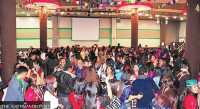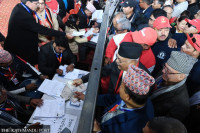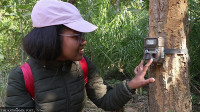National
Last batch of AstraZeneca vaccine from Japan arriving Monday
The Health Ministry said due to the five months gap between the first and the second doses, it is difficult to trace people. The ministry has urged all to get vaccinated when the campaign resumes.
Post Report
As the last consignment of the AstraZeneca vaccine provided by the Japanese government is expected to arrive on Monday, the government is optimistic about completing the administration of the second dose to all those who had taken their first doses of the vaccine in March by the end of this month.
Around 1.4 million people aged 65 and above had taken the first dose of Covishield, the AstraZeneca type vaccine manufactured by the Serum Institute of India, in the second week of March.
The Japan government had announced on July 13 that it would provide 1.6 million doses of the vaccine to Nepal through COVAX, an international vaccine-sharing scheme backed by the United Nations.
Nepal on Saturday received 208,060 doses of the vaccine provided by Japan.
“Today [on Saturday], a part of second-batch of the Japanese-made AstraZeneca Covid-19 vaccine arrived in Kathmandu,” the Japanese embassy in Nepal said in a press statement.
Half of the approximately 1.6 million doses pledged by Japan have already been delivered to Nepal on August 7 and 8 and are being used in the current vaccination campaign.
“The remaining [500,000 to 600,000] doses, which is the final batch of the vaccine provided by Japan, will arrive in Kathmandu on Monday,” Dr Samir Kumar Adhikari, joint spokesperson for the Health Ministry told the Post. “The ministry has directed all provinces to not store the vaccine doses and use them up as they receive them.”
“As the Covishield vaccine that we purchased in advance did not arrive, there has been a big gap between the first and second doses. There is no proper record on the exact number of people who were administered the vaccine,” said Adhikari. “It is difficult to trace those people. We need to make people aware that they should not miss the second dose of the AstraZeneca vaccine.”
The Health Ministry had started administering the second dose of the AstraZeneca vaccine to those who had taken the first dose of Covishield after Japan and Bhutan supplied 1,077,320 doses (847,320 from Japan and 230,000 doses from Bhutan) of the vaccine.
Nepal was in need of around 1.4 million doses of the AstraZeneca vaccine to administer second doses to those aged 65 and above who took their first doses in the second week of March.
Nepal started its vaccination programme on January 27 with 1 million doses of Covishield that it received under grant assistance. Later, the Indian Army gifted 100,000 doses of Covishield to the Nepal Army.
Besides these, the Health Ministry had signed a deal to buy 2 million doses of Covishield from the Serum Institute of India, but only half of the doses were delivered.
India restricted vaccine exports following a devastating second wave of the Coronavirus in the country in April which infected millions and killed hundreds of thousands.
Separately, the COVAX facility provided 348,000 doses of Covishield in the first week of March.
Nepal has so far received the delivery of 7.4 million doses of the Vero Cell vaccine (5.6 million doses bought and 1.8 million grant) from China.
Besides deliveries from China, Japan and Bhutan, the country received 1,534,850 doses of the single-shot Johnson & Johnson vaccine, which was provided by the United States of America through COVAX.
The government has already paid for four million doses of the Moderna vaccine through the World Bank to the US manufacturer of the vaccine, and delivery is expected by mid-February.
Also expected by mid-February is 11 million doses from COVAX under a cost-sharing mechanism, which means the government will pay COVAX the amount equivalent to what COVAX paid to the manufacturing company.




 16.12°C Kathmandu
16.12°C Kathmandu














